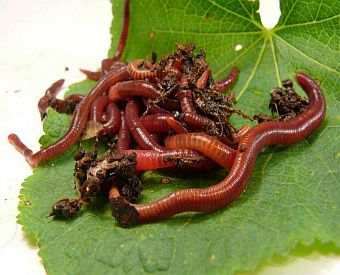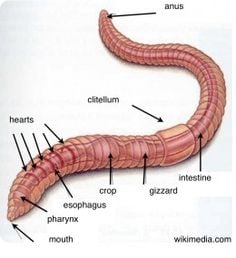Taking Full Advantage Of the Benefits of Red Wiggler Worms: A Comprehensive Guidebook for Home Gardeners and Urban Farmers
In the world of sustainable horticulture practices, red wiggler worms stand as unhonored heroes, silently transforming organic waste into nutrient-rich spreadings that can function wonders for dirt health. As home garden enthusiasts and city farmers progressively look for environmentally friendly and cost-efficient ways to improve their yards, the potential advantages of harnessing the power of red wigglers can not be overstated. From decreasing cooking area waste to cultivating much healthier plants, the application of these simple animals provides a wide variety of benefits. By exploring the intricacies of exactly how to properly take care of and make best use of the benefits of red wiggler worms, people can unlock a wide range of opportunities for enhancing the sustainability and productivity of their gardening endeavors.
Understanding Red Wiggler Worms
Red Wiggler worms, renowned for their efficient composting capabilities, are a species of earthworms widely used in vermiculture practices. These worms, clinically known as Eisenia fetida, prosper in decomposing organic material, making them suitable candidates for composting.
One secret feature of Red Wiggler worms is their reproductive rate. These hermaphroditic animals have both male and female reproductive body organs, allowing them to recreate swiftly under favorable problems. A fully grown Red Wiggler can produce numerous spawn in a brief duration, guaranteeing a stable populace within a composting system.

Establishing a Worm Bin
When developing a worm bin for vermiculture objectives, proper prep work and attention to information are vital for developing a favorable setting for Red Wiggler worms. Begin by choosing an appropriate container for your worm container. This can be a plastic or wooden container with a lid to preserve dampness levels and secure the worms from light. Ensure that the bin has drain openings at the bottom to stop waterlogging.

Place the worm bin in a great, dark area far from direct sunshine and severe temperature levels. Consistently check the dampness degrees, including water if the bed linen feels dry or flaky. Feed the worms a well balanced diet plan of vegetables and fruit scraps, avoiding citrus fruits, onions, and spicy foods. By following these steps, you can set up a prospering worm container that will efficiently refine natural waste into nutrient-rich vermicompost for your garden.
Feeding and Maintaining Worms
Making certain a balanced and nutritious diet is important for the wellness and performance of Red Wiggler worms in a vermiculture system. It is important to avoid feeding them citrus fruits, onions, garlic, dairy items, meat, and oily foods as these can be dangerous to the worms or create undesirable smells in the bin.
Proper moisture levels are additionally critical for the health of Red Wiggler worms. By carefully monitoring their diet, dampness, and ecological conditions, home visit this site right here garden enthusiasts and city farmers can maintain a efficient and healthy Red Wiggler worm population for composting purposes.
Harvesting Worm Castings
To successfully extract nutrient-rich worm spreadings from the vermicompost, a systematic harvesting procedure is essential for making best use of the composting benefits. The initial step in gathering worm spreadings is to encourage the worms to move to one side of the bin.
After the spreadings have actually been harvested, it is vital to separate any kind of staying worms from the castings to prevent damaging them during storage space or application. One reliable method is to produce conical heaps of spreadings under bright light. Worms will instinctively move away from the light, enabling very easy splitting up and removal.
Finally, the harvested worm castings must be saved in an awesome, dark, and completely dry area to maintain their high quality and efficiency as a nutrient-rich dirt amendment. By complying with these actions, home gardeners and metropolitan farmers can optimize the advantages of red wiggler worms in their vermicomposting systems.
Utilizing Worm Castings in Gardening
The unification of nutrient-rich worm spreadings right into garden soil can substantially enhance click for more info plant growth and general dirt health. Worm castings, additionally referred to as vermicast, are an all-natural plant food generated by red wiggler worms as they damage down organic matter. These castings are abundant in important nutrients like nitrogen, phosphorus, potassium, and useful microorganisms that promote plant growth and boost dirt structure.
When utilizing worm spreadings in horticulture, it is necessary to mix them thoroughly into the dirt or utilize them as a top dressing around plants. The slow-release nature of worm spreadings makes certain a constant supply of nutrients to plants gradually, lowering the threat of nutrient leaching and promoting long-term soil fertility. In addition, look at this website worm spreadings aid boost dirt aeration, water retention, and microbial activity, producing a healthy environment for plant roots to thrive.

Verdict
Finally, the utilization of red wiggler worms in home gardening and metropolitan farming can dramatically benefit dirt health and plant development. By recognizing exactly how to establish and keep a worm container, feed the worms correctly, and gather their nutrient-rich spreadings, garden enthusiasts can optimize the advantages of these earthworms. Incorporating worm castings right into gardening practices can improve dirt fertility and total plant performance. Generally, red wiggler worms use a sustainable and efficient remedy for improving yard and ranch yields.
In the realm of sustainable gardening practices, red wiggler worms stand as unsung heroes, silently changing natural waste right into nutrient-rich castings that can work marvels for dirt health and wellness.When establishing a worm bin for vermiculture purposes, proper prep work and focus to information are crucial for developing a helpful setting for Red Wiggler worms. The initial action in collecting worm castings is to motivate the worms to migrate to one side of the bin. Worm castings, also known as vermicast, are a natural plant food generated by red wiggler worms as they break down organic issue. By understanding how to establish up and maintain a worm bin, feed the worms appropriately, and collect their nutrient-rich castings, gardeners can optimize the advantages of these earthworms.